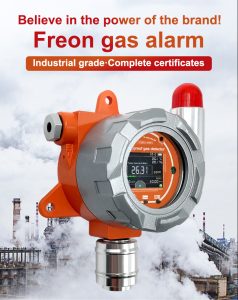Environmental monitoring plays a crucial role in ensuring the health and well-being of our planet. As the impact of pollution continues to pose significant challenges, advancements in gas sensor technology have emerged as pivotal tools for enhanced environmental monitoring. Gas sensors are designed to detect various gases present in the atmosphere, providing real-time data on air quality, pollution levels, and potential hazards. This article explores the recent advancements in gas sensor technology and their applications in environmental monitoring.
Gas Sensor Technology Overview:
Gas sensors are devices used to detect and measure the concentration of specific gases in the environment. They employ various principles such as electrochemical, optical, semiconductor, and catalytic reactions to analyze gas samples. These sensors are highly sensitive, accurate, and capable of detecting a wide range of gases, including carbon dioxide, carbon monoxide, nitrogen dioxide, ozone, and volatile organic compounds (VOCs).
Miniaturization and Portability:
One significant advancement in gas sensor technology is the miniaturization of sensors, allowing them to be integrated into portable devices such as smartphones, wearables, and drones. Miniaturized gas sensors enable real-time, on-site monitoring, and provide individuals with access to localized air quality information. This facilitates informed decision-making and the ability to take immediate action to mitigate potential risks.
Internet of Things (IoT) Integration:
The integration of gas sensors with IoT technologies has revolutionized environmental monitoring. By connecting gas sensors to a network, real-time data can be collected, transmitted, and analyzed remotely. This enables comprehensive monitoring of air quality across large areas, giving authorities valuable insights into pollution patterns and facilitating the development of targeted mitigation strategies.
Selectivity and Sensitivity Improvements:
Advancements in gas sensor technology have led to enhanced selectivity and sensitivity in detecting specific gases. Traditional gas sensors often faced challenges in distinguishing between different gases and providing accurate measurements in complex environments. However, with improved materials, innovative designs, and signal processing techniques, modern gas sensors can now differentiate between specific gases with higher precision and sensitivity.
Calibration and Accuracy:
To ensure the accuracy and reliability of gas sensor measurements, calibration techniques have undergone significant advancements. Calibration involves comparing sensor responses to known gas concentrations to establish a reliable correlation. Modern gas sensors often incorporate automated calibration processes, reducing the need for manual intervention and enhancing measurement accuracy over extended periods.
Real-Time Data Analysis and Visualization:
Advancements in data analytics and visualization techniques have made it possible to process and interpret large datasets generated by gas sensors in real-time. This enables the rapid identification of pollution hotspots, the detection of emission sources, and the tracking of pollutant dispersion patterns. By presenting data in user-friendly formats, such as maps, graphs, and charts, decision-makers can easily comprehend and act upon critical environmental information.
Emerging Applications:
The advancements in gas sensor technology have expanded their scope of applications in environmental monitoring. Gas sensors are now being utilized in urban planning to assess air quality and guide sustainable development strategies. They are also integral in indoor air quality monitoring systems, ensuring healthy living and working environments. Furthermore, gas sensors find application in industrial settings to detect leaks, prevent accidents, and maintain occupational safety standards.
Future Trends and Challenges:
Looking ahead, further advancements in gas sensor technology are expected. This includes the development of sensors capable of detecting an even wider range of gases, improving energy efficiency, and reducing costs. However, challenges such as sensor drift, durability, and cross-sensitivity remain areas that require ongoing research and development efforts.
Conclusion:
Advancements in gas sensor technology have revolutionized environmental monitoring by enabling real-time, accurate, and comprehensive analysis of air quality and pollution levels. The miniaturization, integration with IoT, improved selectivity, calibration techniques, and real-time data analysis have significantly enhanced the capabilities of gas sensors. As we continue to face environmental challenges, these advancements will continue to play a critical role in safeguarding our planet and guiding sustainable development efforts. Through continued research and innovation, gas sensors will undoubtedly contribute to a healthier and cleaner future for generations to come.
 : +86 155 8830 2704
: +86 155 8830 2704 : jxdziot@gmail.com
: jxdziot@gmail.com
